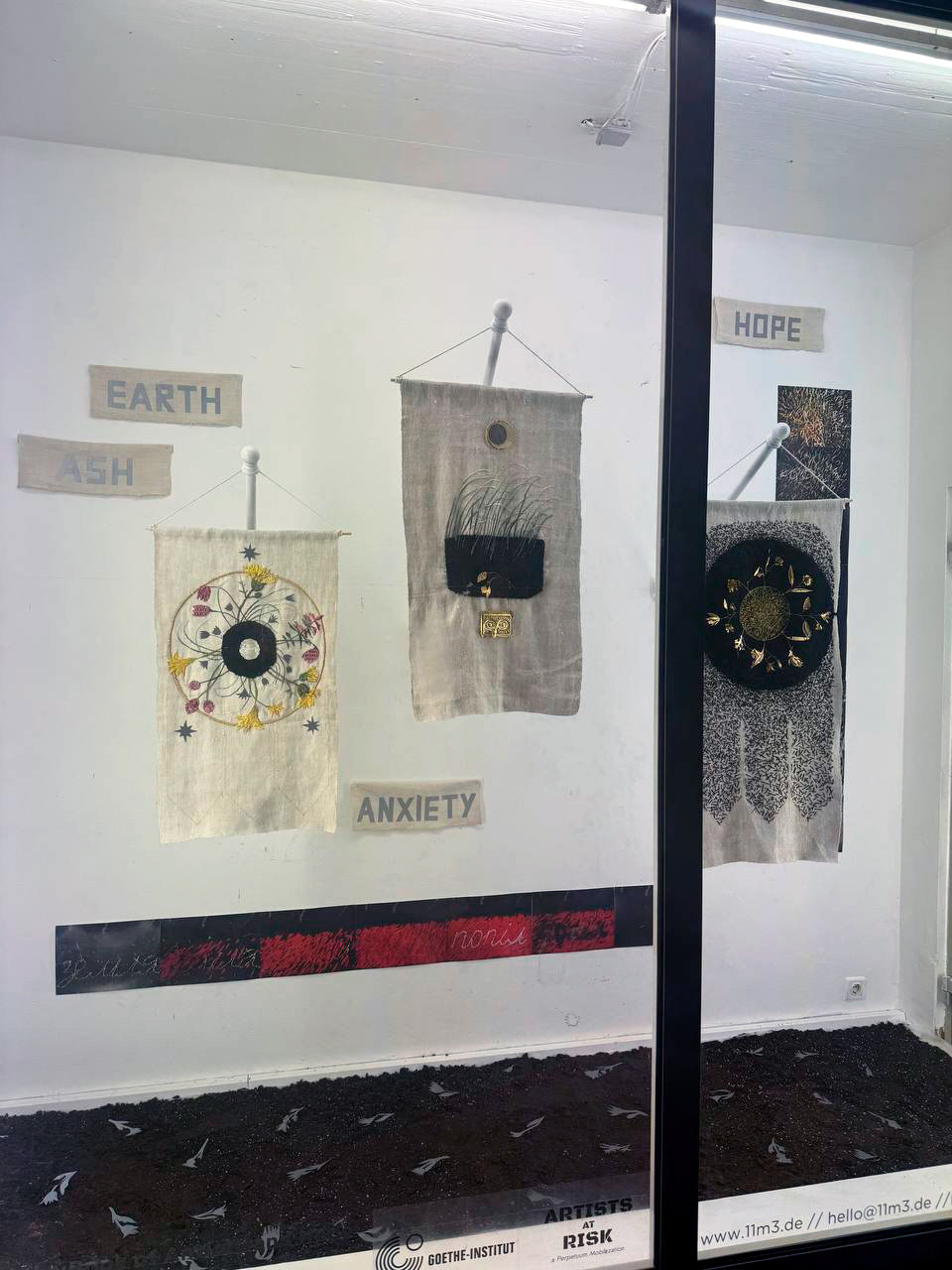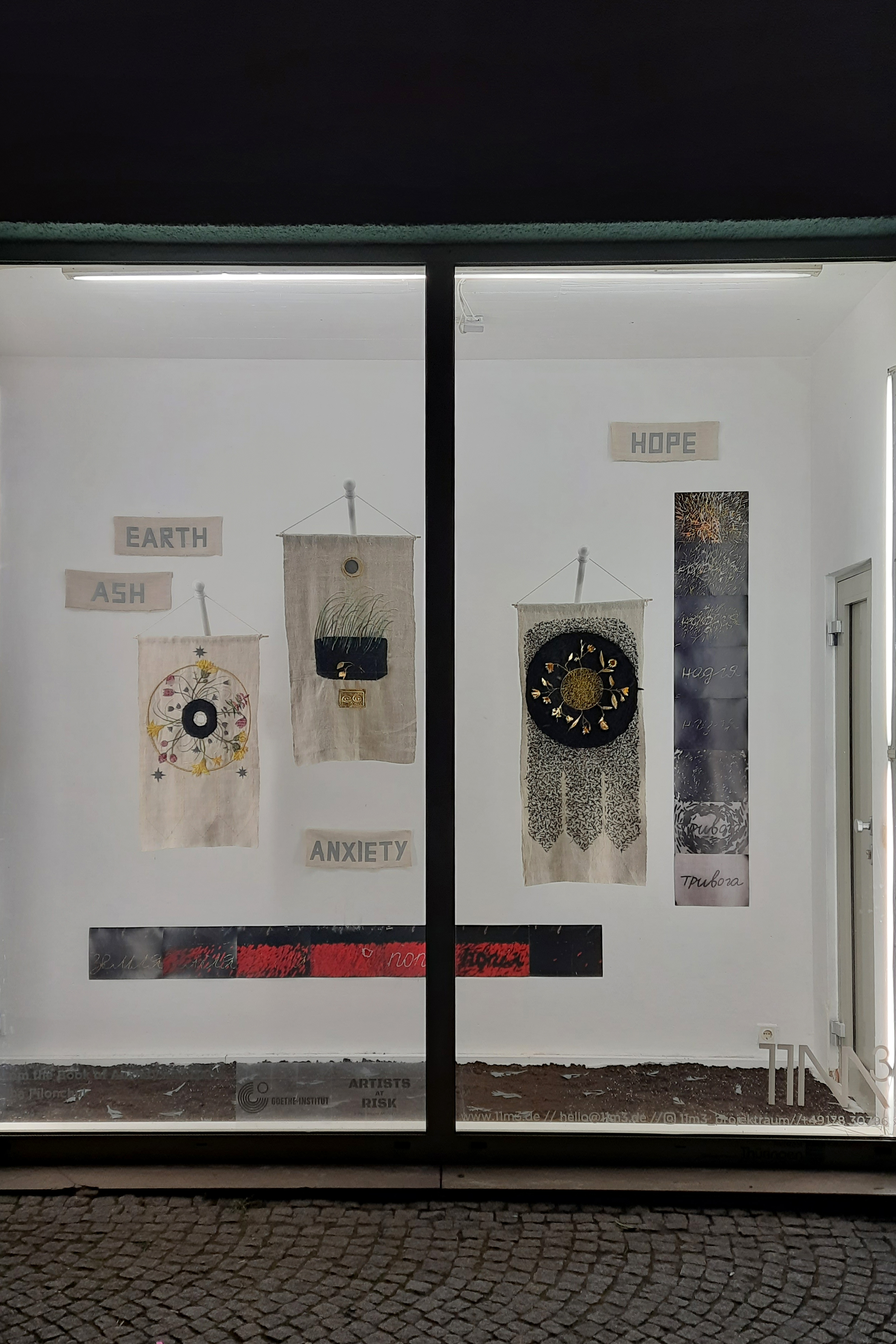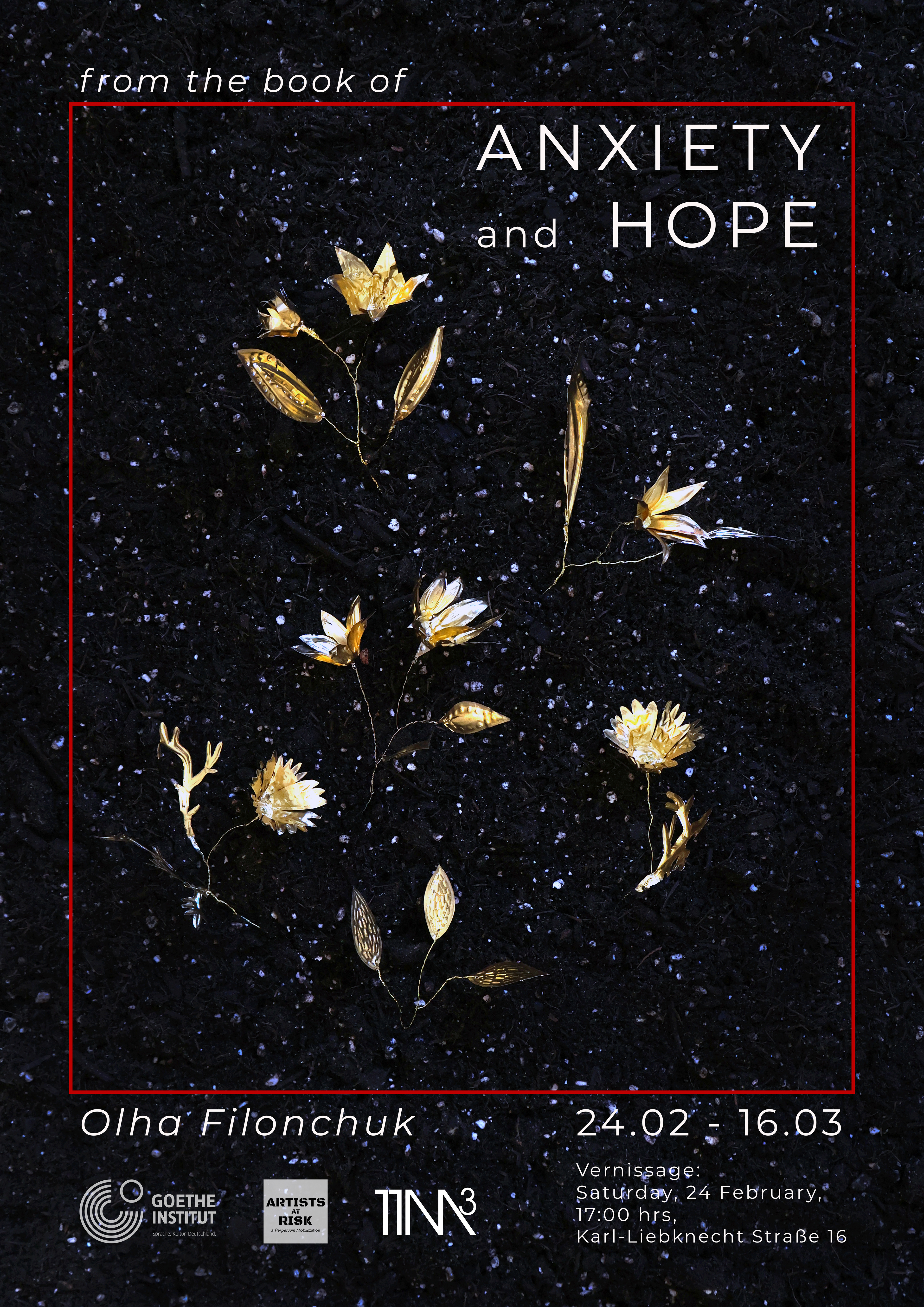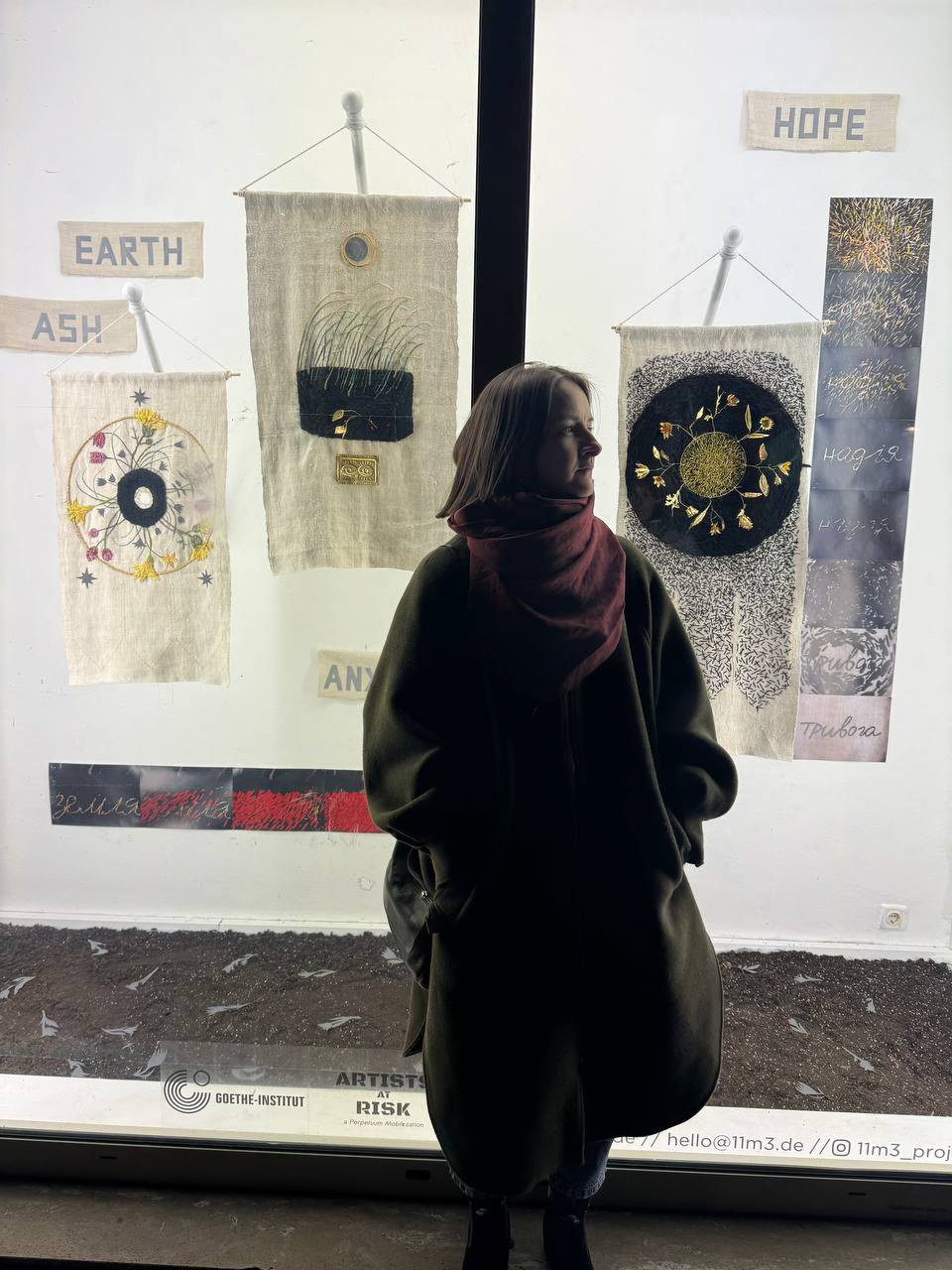The installation is dedicated to the rare plants from the Red Book of Ukraine
of the natural reserve Askania Nova (whose informal name is “the book of anxiety and hope”), one of the oldest steppe reserves in the world and one of the biggest in Europe.
of the natural reserve Askania Nova (whose informal name is “the book of anxiety and hope”), one of the oldest steppe reserves in the world and one of the biggest in Europe.
Numerous plants have disappeared on the vast expanses of former Eurasia grasslands during the last two centuries, but keep growing in the Askania Nova Reserve, occupied by Russian troops since March 2022. Since the occupation, the reserve staff can not access the place, making it almost impossible to assess the conditions of the endangered species after more than five fires had happened since the beginning of the occupation.
The project aims to reflect on how nature becomes an overlooked, coveted spoils of war in the power struggle. In this way, the project echoes Donna Haraway’s “more-than-human” concept that challenges us to move beyond the anthropocentric view and recognize the intricate interconnectedness between humans and the environment. The embroidered canvases that compose the installation take inspiration from the Gonfalons (known as “khorugva” in Ukrainian), traditionally used in Christian ceremonies. These ensigns depict significant shrines, biblical narratives, and saints, as well as the coats of cities or armies.


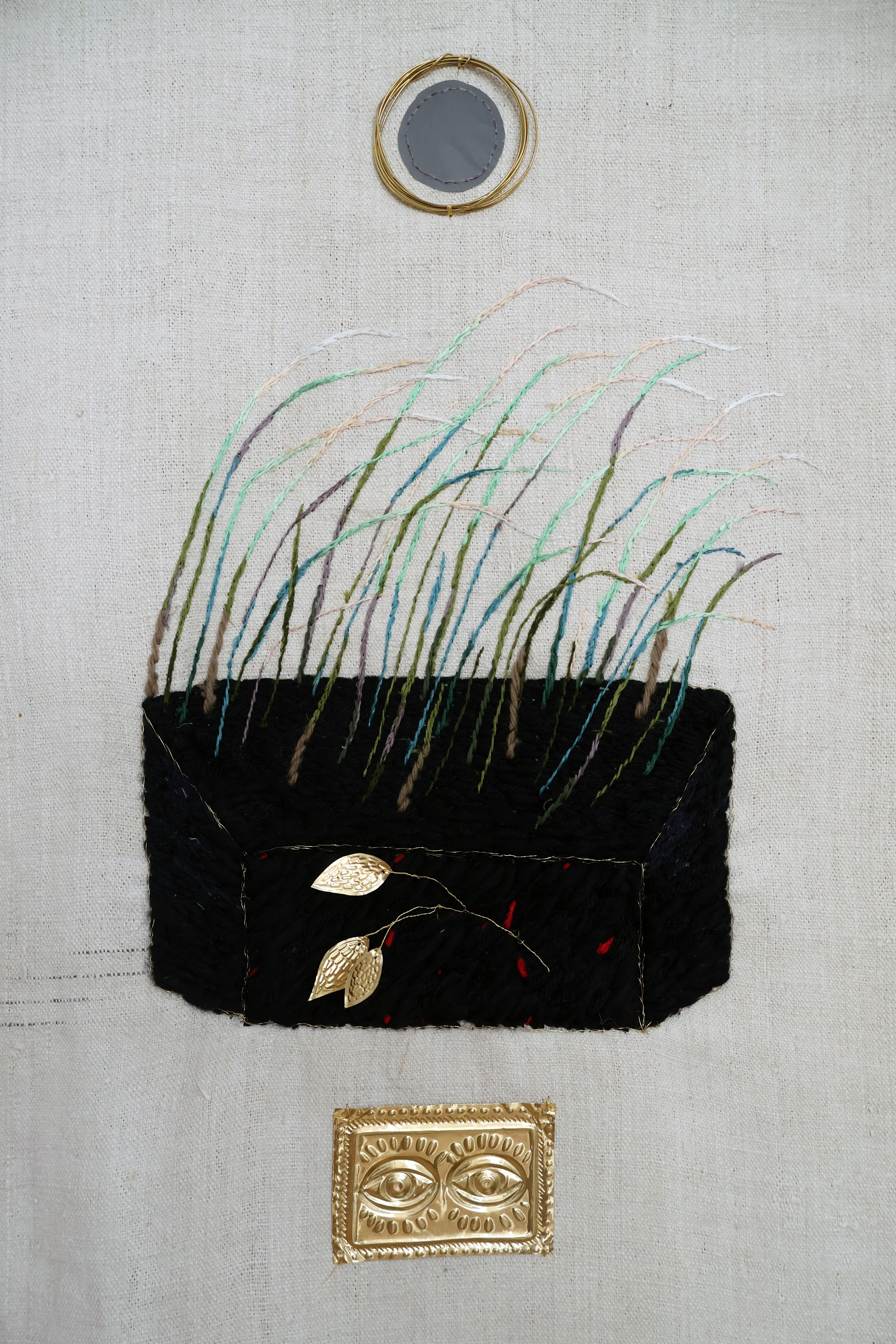
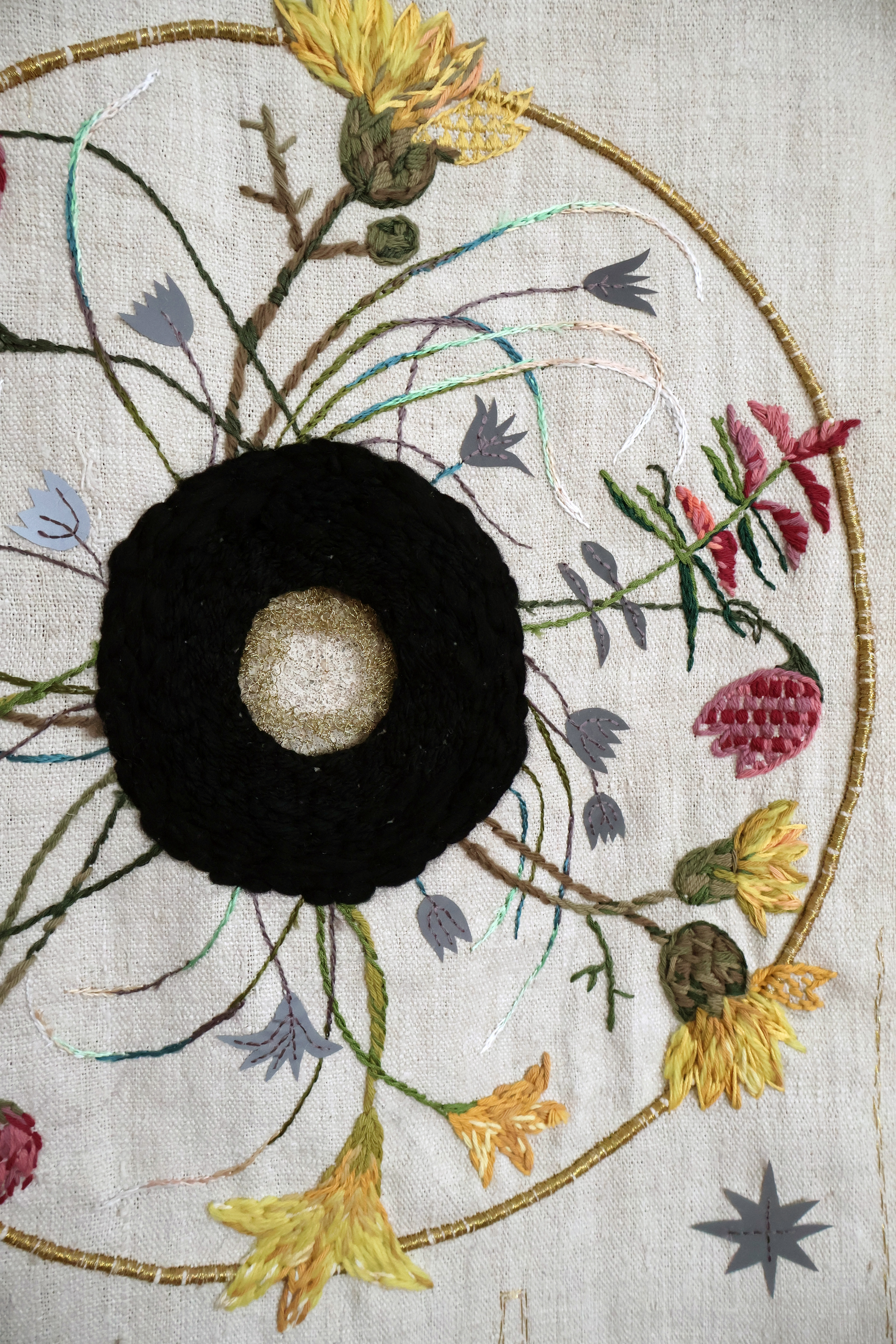
Life, nature, land, and freedom are the greatest values of mankind, vulnerability, and sacredness, which we do not feel in a conditionally peaceful everyday life, as we do not notice the air we breathe. But, during the war, physically fighting for a piece of your native land, it becomes something much more than soil, plants, and your home; it becomes a symbol and source of spiritual senses.
As a result of exploration of the concept of the sacred in times of catastrophe, the project emerges as a dedication to beauty and pain, to the earth, and to hope that transgresses and eventually grows life, sometimes even among the ruins.
As a result of exploration of the concept of the sacred in times of catastrophe, the project emerges as a dedication to beauty and pain, to the earth, and to hope that transgresses and eventually grows life, sometimes even among the ruins.
The process of creating gonfalons is also a performative one: there are words hidden under layers of embroidery. The process is captured in a step-by-step photo series that tries to mirror the cyclical transformations that people, society, and nature are constantly undergoing.
Transition from the word "earth"(земля) to "ash"(попіл), and its cycle, hidden behind the layers of embroidery

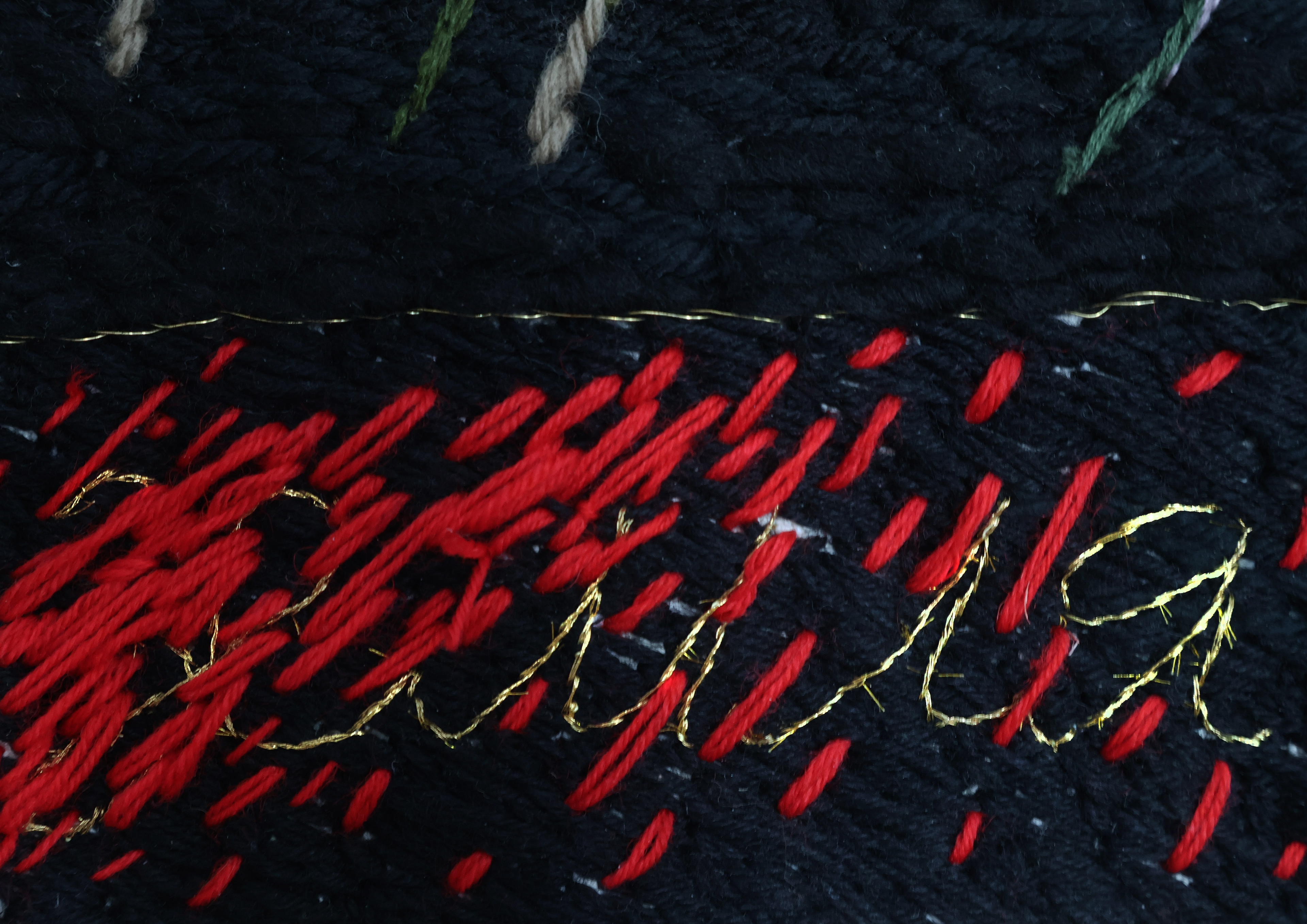

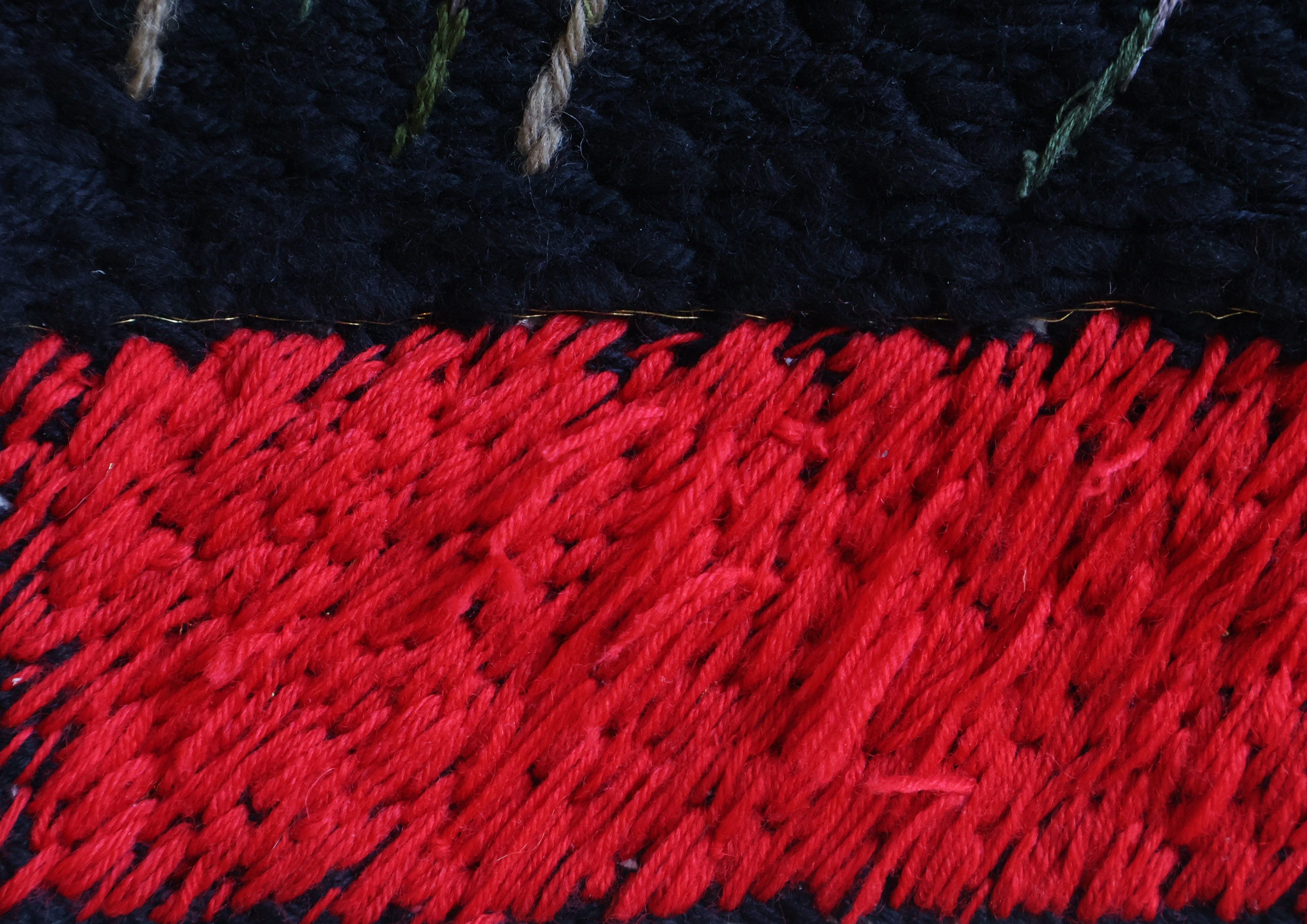
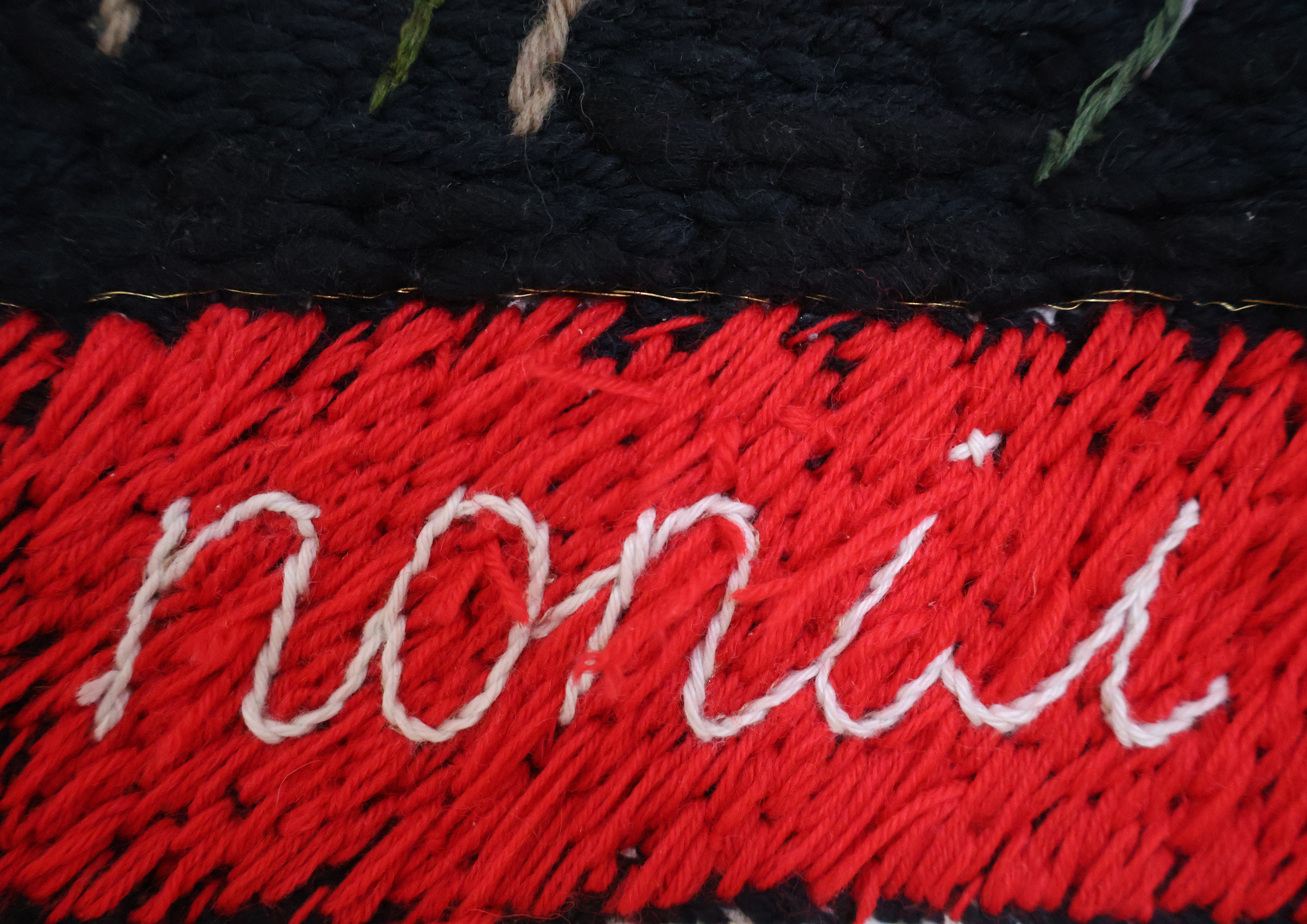
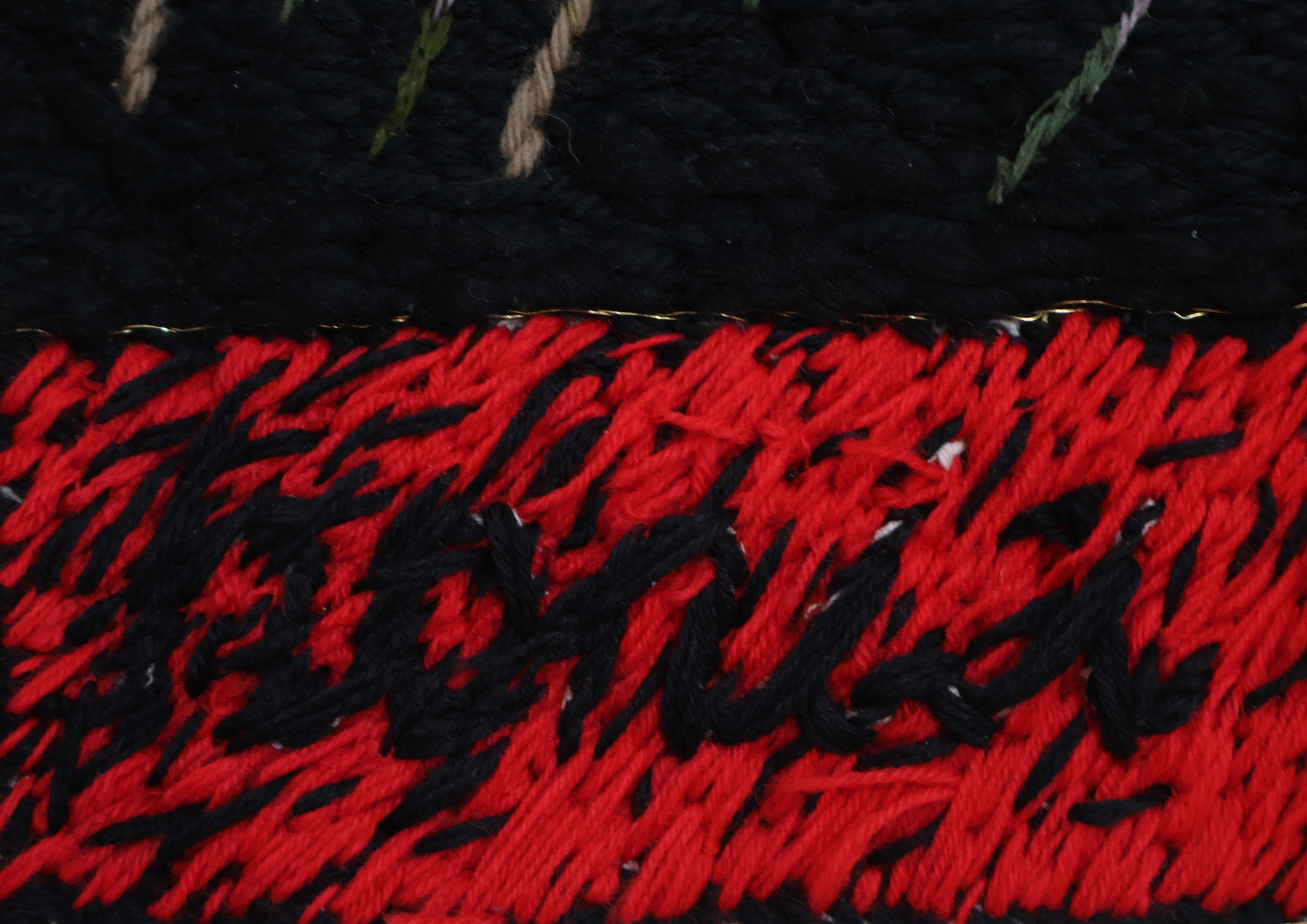
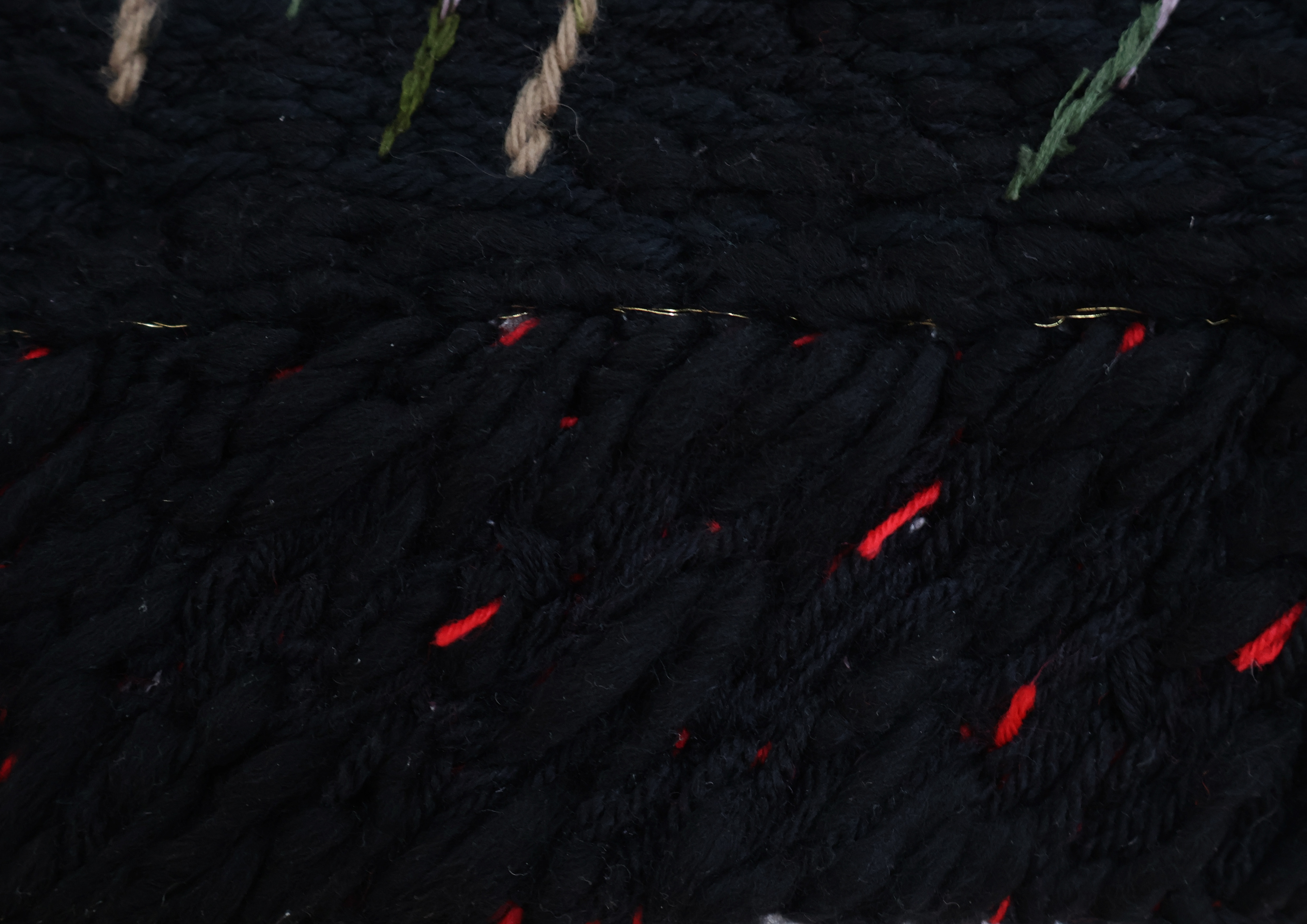
Transition from the word "anxiety"(тривога) to "hope"(надія), hidden behind the layers of embroidery

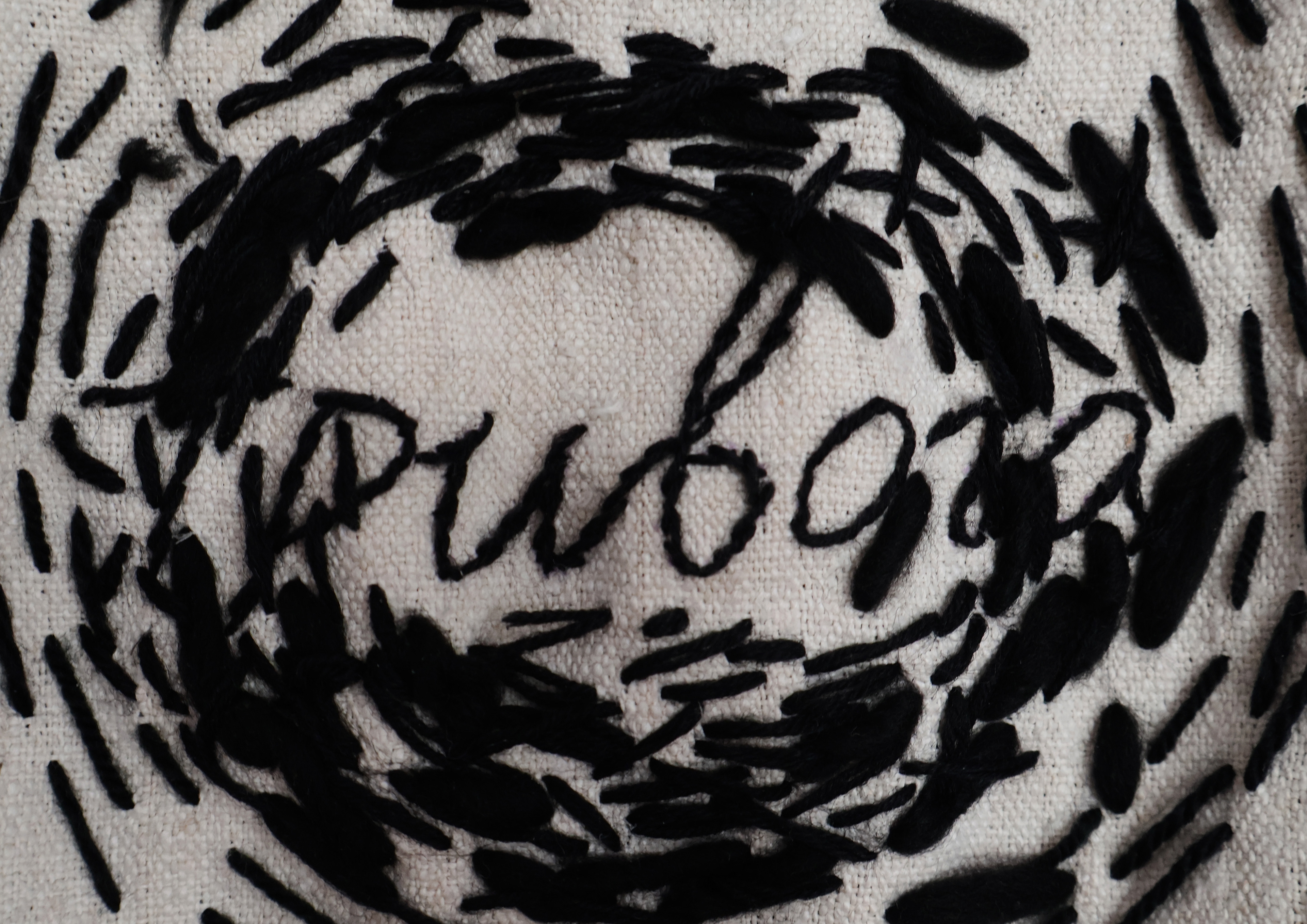
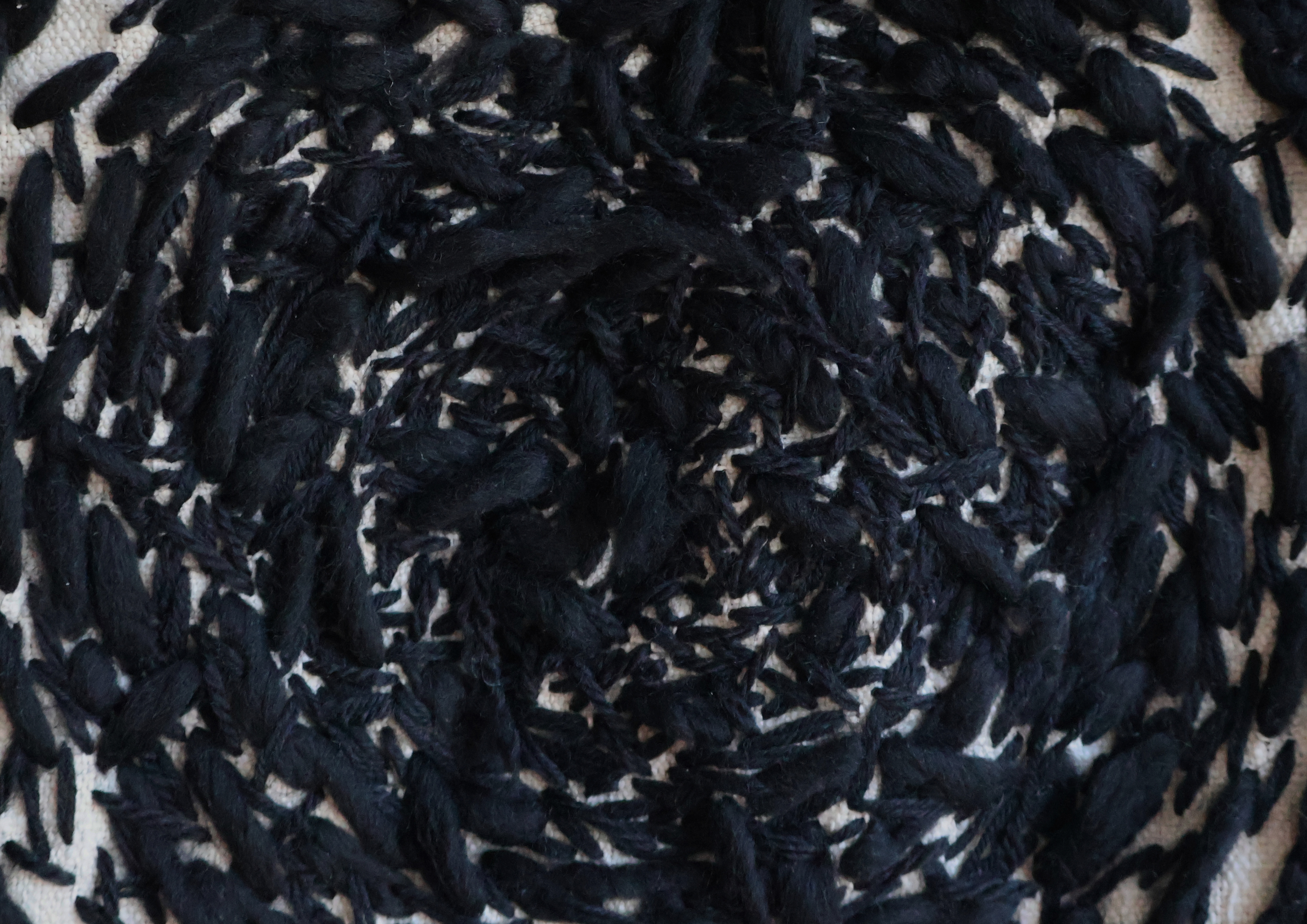
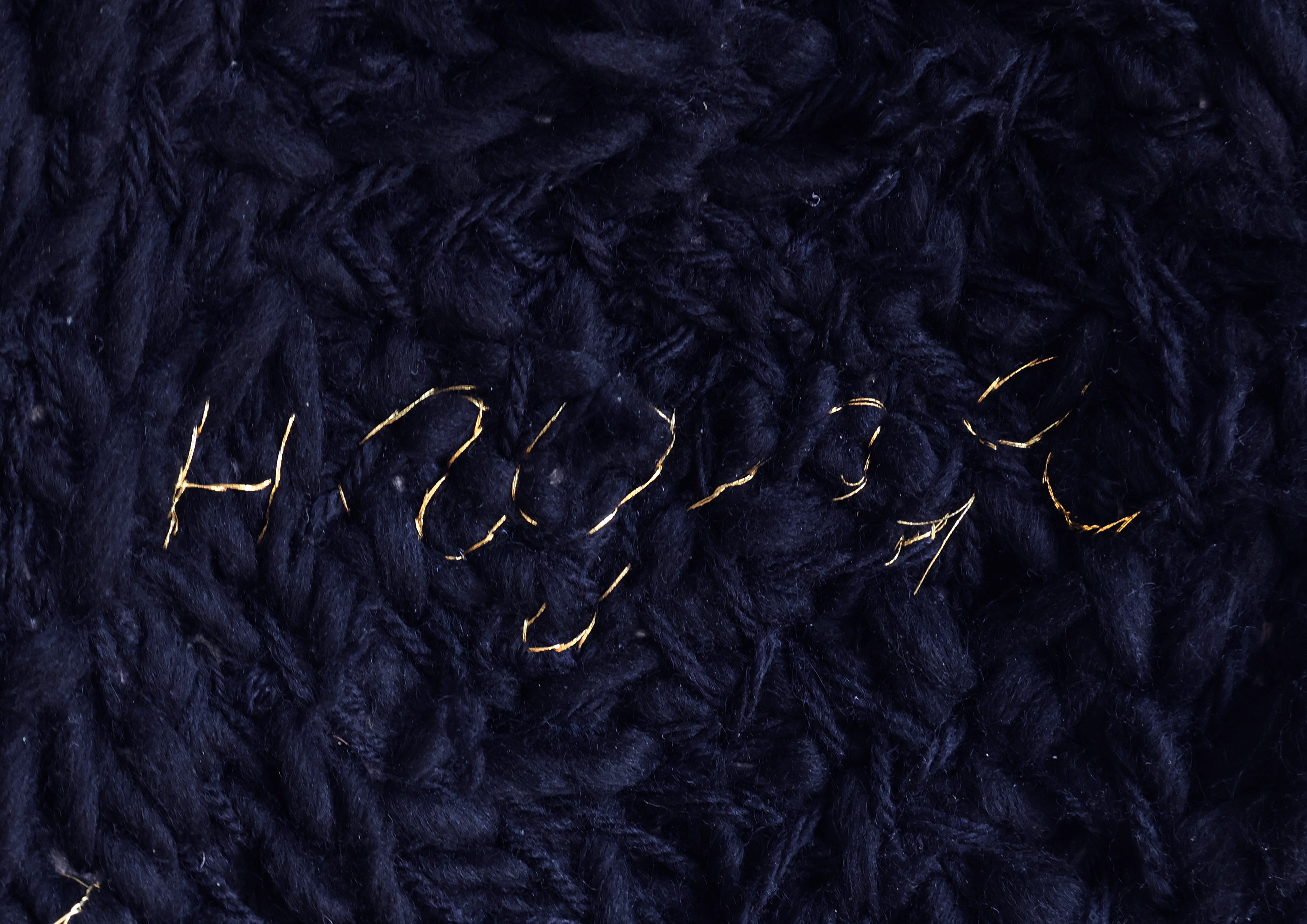
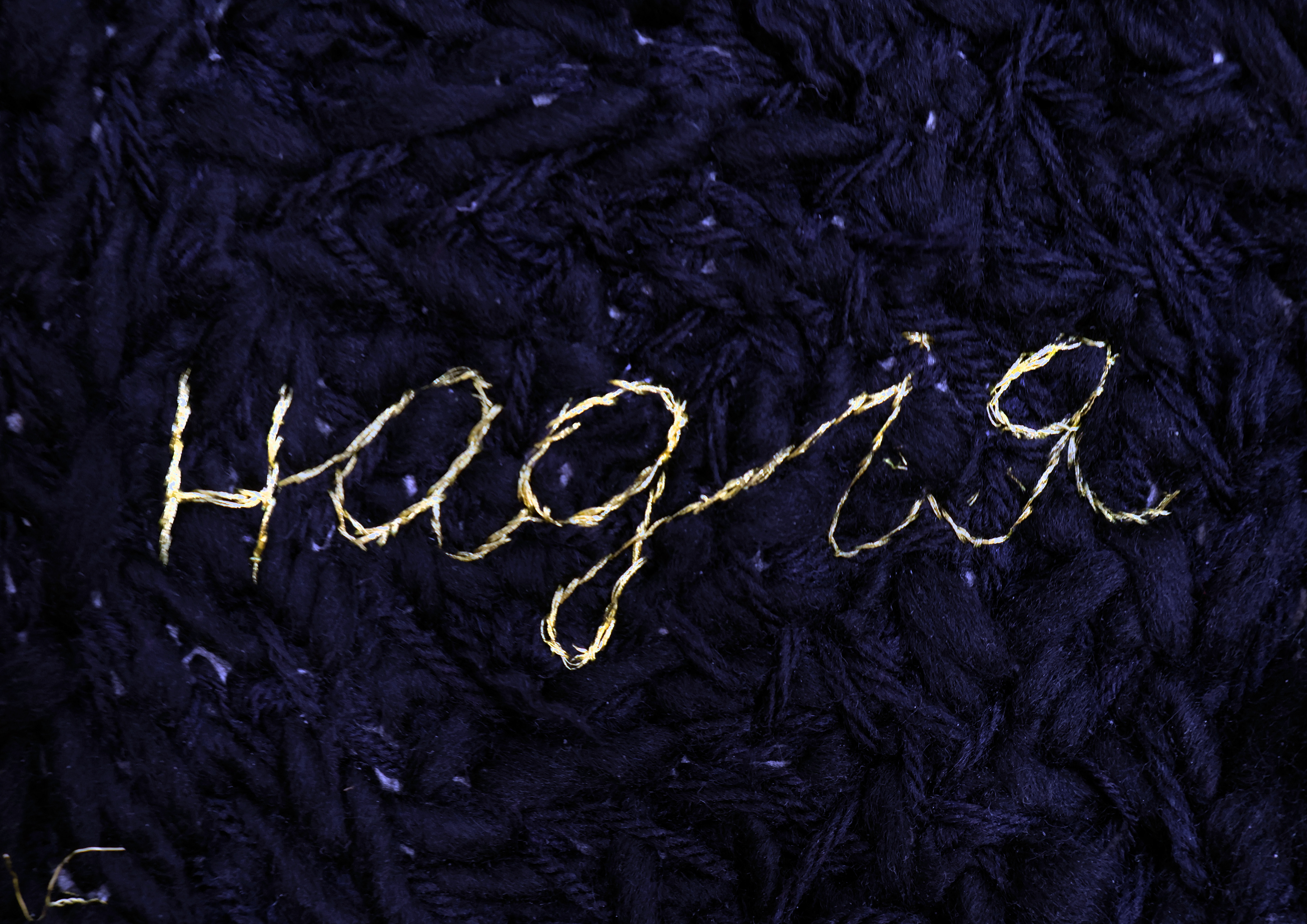

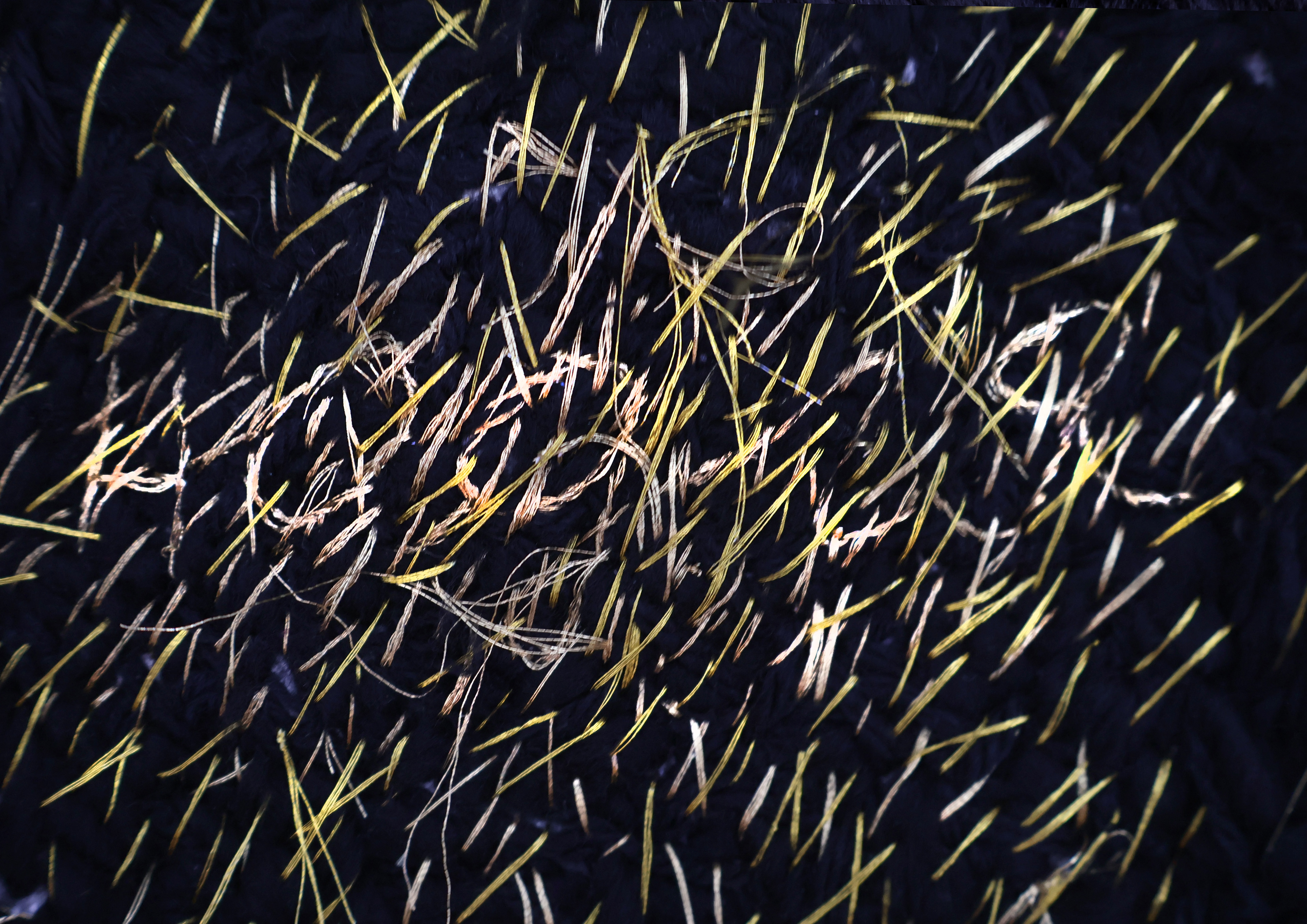
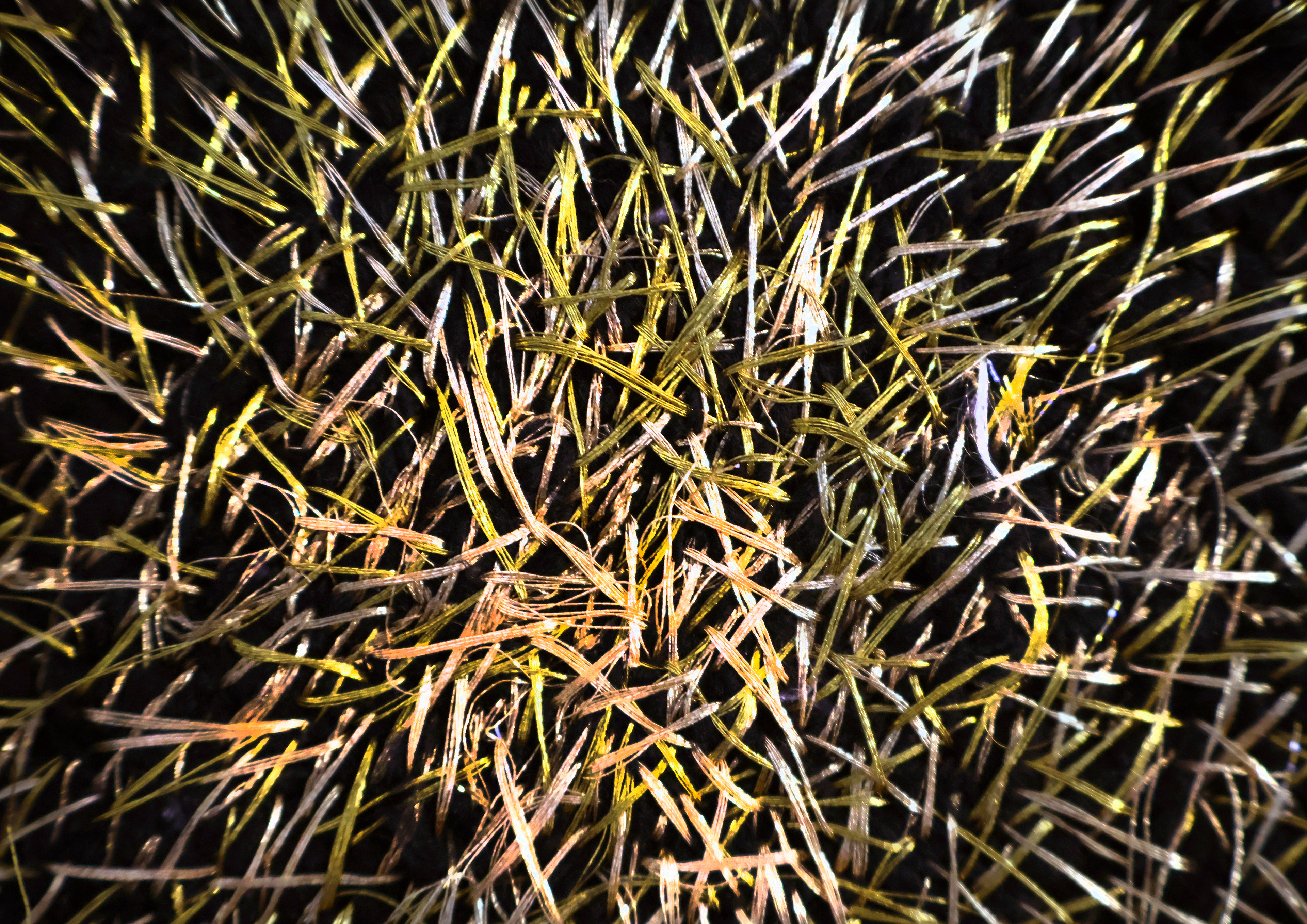
The project was created in the frame of 2,5 months residency in 11m3Projecrtraum in Weimar and supported by Artist at Risk and Goethe Institute in 2023-2024
